The new Cannondale SuperSix Evo 4 is lighter, faster, and has a threaded bottom bracket
LAB71 has usurped Hi-Mod as the lightest option, and offers the most premium build
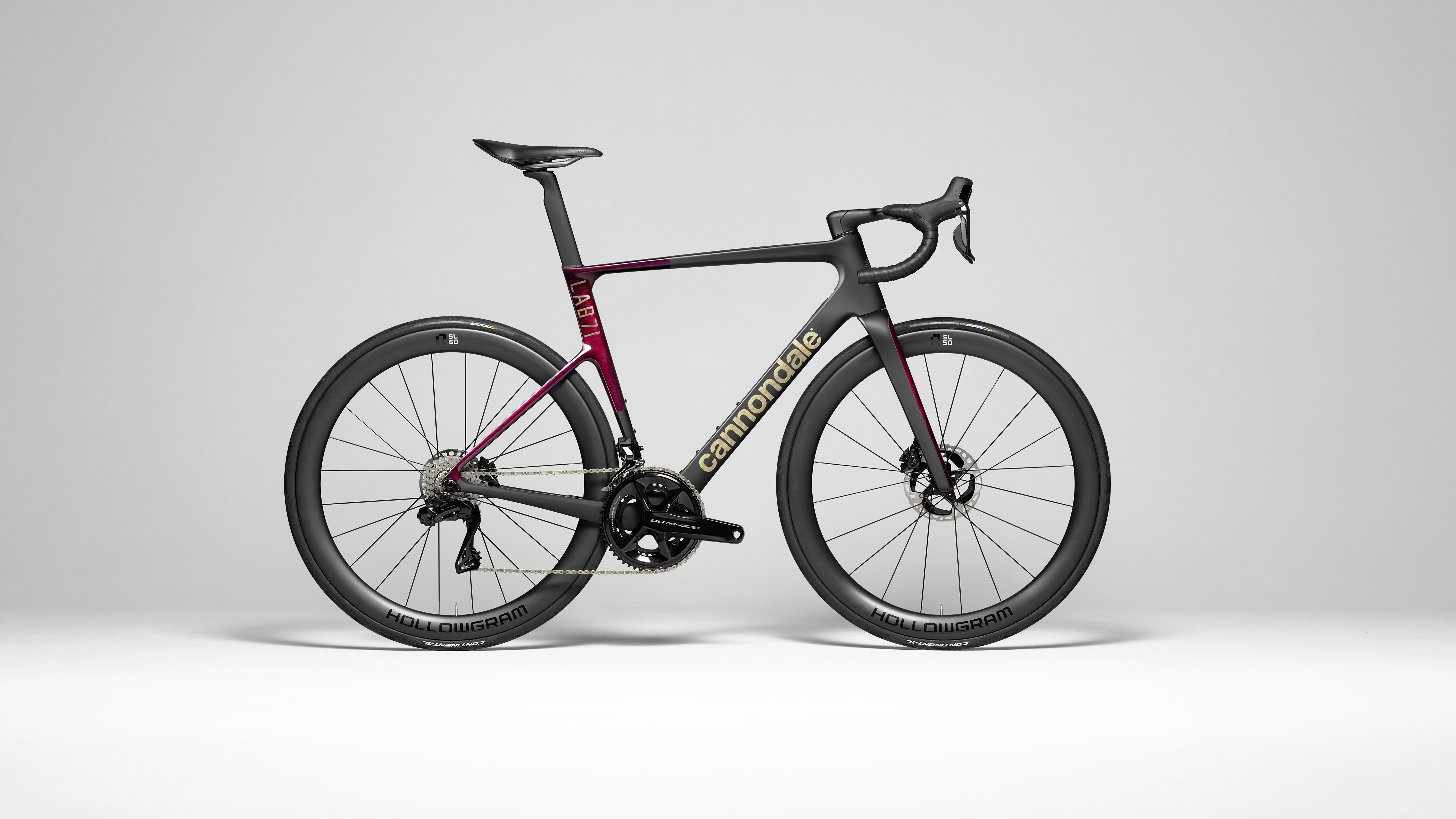
It’s been a few weeks coming now, but Cannondale has finally, officially, launched the new SuperSix Evo 4. We’ve been fortunate enough to get a first look at it, and some miles on it around the hills of Girona, so for our thoughts on how it rides and how it looks be sure to check that out (you can find our new SuperSix review here). Here though we’ll stick to the official details.
The new SuperSix is designed, as Cannondale says, to be ‘faster everywhere’. It’s an all-around race bike, in the vein of the Specialized Tarmac SL7 and the new Canyon Ultimate; the weight of a climbing bike, but with enough aero considerations to make it a viable choice on flat terrain too. Effectively, it wants to be one of the best road bikes, regardless of category.
The design aims, as with any new bike, were to make things lighter and more aero, but Cannondale was at pains to note that it also had to remain true to the character of the outgoing SuperSix Evo 3.
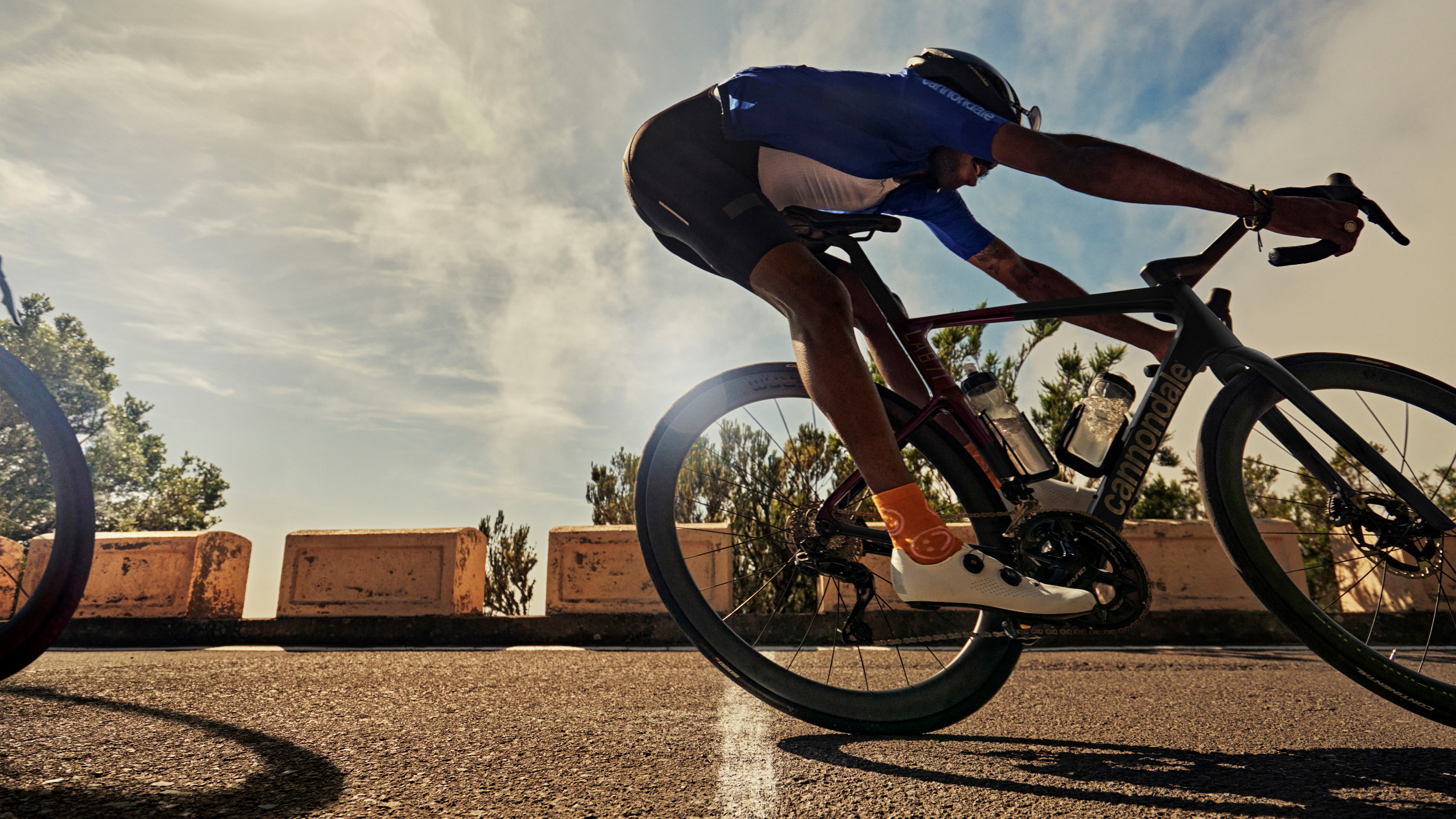
The new SuperSix Chassis
If you liked the Evo 3 then chances are that you’ll like the Evo 4; the geometry in all the areas that matter is totally identical. Same stack, reach, head angle, wheelbase, all the key points. The only real difference is seat stays that are dropped slightly further. Sizing slightly depends on what tier frameset your SuperSix is based around, but in general sizes 44 to 61 are catered for. The big news, from a sizing perspective, is that the size 60 and 62 options are being amalgamated into a new size 61.
The frame is available, whether on its own or as a complete bike, in three tiers: Carbon, Hi-Mod, and the new LAB71, which we’ll dive into separately. Each is slightly lighter than the tier below, as you’d expect, with a painted size 56 frameset tipping the scales at 930g, 810g, and 770g respectively. The LAB71 models hit the UCI weight limit of 6.8kg out of the box.
Irrespective of carbon layup the frames all have the same shape, and therefore the same aerodynamic performance (if you discount the build kits). The new SuperSix saves 12 watts over the outgoing version at 45km/h, which also bridges over half the deficit that the old model had to the SystemSix. Each model also clears 34mm front and rear in the tyre department.
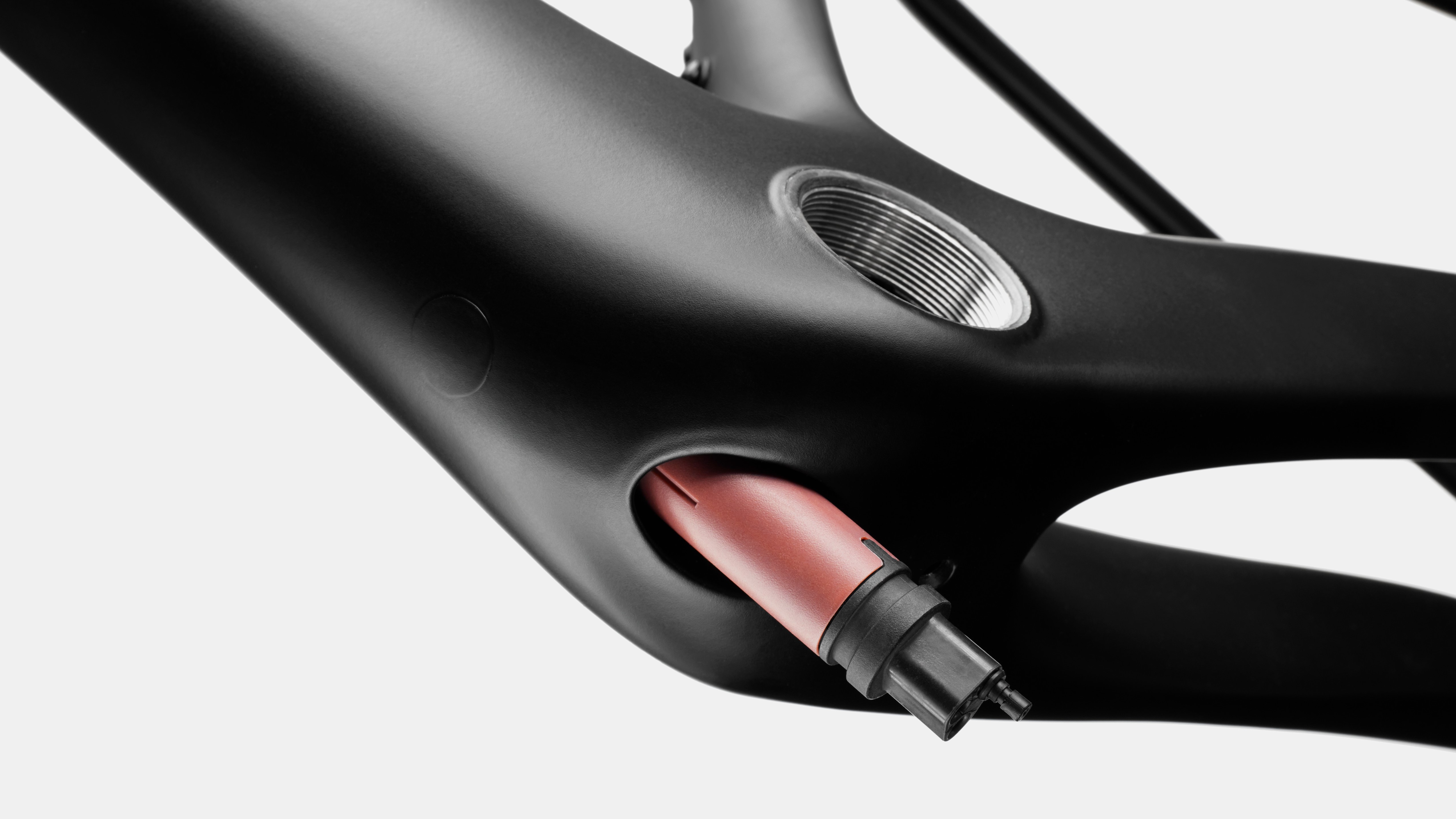

Internal and external details
As we deduced from our speculations before the launch the new SuperSix does indeed have a threaded bottom bracket, and a BSA one at that rather than a T45 unit, but there’s a lot more going on inside the frameset that we couldn’t see. First is an integrated battery holster tucked at the base of the downtube, just in front of the BB. Not only does this lower the centre of gravity, but it also allows for a narrower seatpost, as we’ve also seen on the new Pinarello F recently, which further enhances the aerodynamic efficiency of the frameset.
The latest race content, interviews, features, reviews and expert buying guides, direct to your inbox!
Up front, the fork steerer is triangular to allow space for the hoses and cables (yes, it still can be used with cable-actuated groupsets). The points of the triangle have been rounded off, and with the use of a pair of spacers, the steerer can be used with any standard stem to allow the rider to properly tune their setup. With longevity in mind the fork steerer, christened ‘Delta Steer’, has been shrouded in a highly abrasive resistant layer to avoid any issue with hoses eroding the steerer away over time.
The LAB71 framesets and lower tier complete bikes feature the Cannondale Conceal stem, with cable routing underneath for ease, rather than within. The LAB71 complete, along with the upper tier Hi-Mod 1 come instead with a fully integrated one-piece system designed in collaboration with MOMO, the automotive and design company perhaps most famous for producing race car steering wheels.
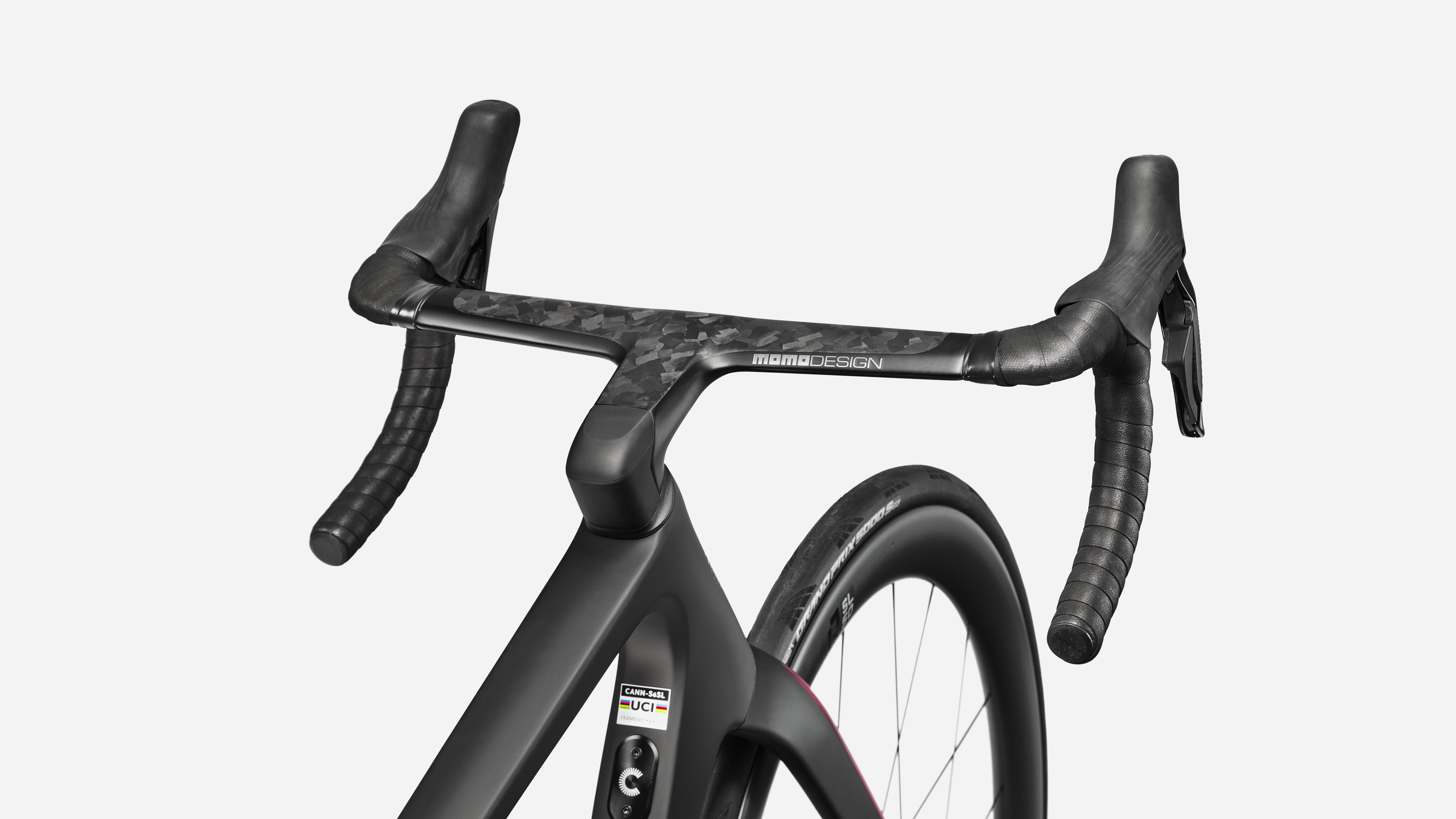
A final physical detail on the frame is a blind dropout on the fork. This means the threads of the thru-axle don't protrude out of the other side of the dropout. It doesn’t necessarily help anything in terms of aerodynamics, but it’s intended to offer a clean aesthetic from the drive side. Aesthetics have clearly not been an afterthought, with a full 13 different colour options, though not all of them are available at all levels. In some models a superficial layer of ‘forged carbon’ has been used to create a more interesting textural dynamic, mirroring the upper surface of the MOMO bar.
Peripherally too there is a pair of aero bottles. Think of a standard bottle, but just chop the sides off. They are only compatible with the included cages, but the cages can hold any standard bottle if you’re a hydration traditionalist and insist on exclusively drinking from cylinders.
Also beyond the realm of the frameset are two new sets of Hollowgram wheels. The R-SL 50 and the R-S 50, weighing in at 1,520g and 1,620g respectively. 50mm deep front and rear, 21mm internal width and 32mm external they roll on DT-Swiss hubs and are hooked.

What is LAB71?
For those of us not content with the Hi-Mod (short for High Modulus, i.e. stiffer carbon, so less of it is needed resulting in a lighter weight), Cannondale has recently launched ‘LAB71’. Details were thin on the ground on the official launch, but the new SuperSix Evo is the first bike to get the treatment. LAB71 will span all genres, including road, gravel, MTB and e-MTB, and is the new top tier. Lighter frames, more premium builds. Think S-Works to Specialized, or AMG to Mercedes.
The LAB71 version of the new SuperSix is constructed from a new ‘Series 0’ carbon in a layup different to the Hi-Mod and Carbon models, and uses a special ‘nano-resin’. Buzzwords or not, it has led to a lighter frame. Interestingly, through looking at the UCI legal frames list, we initially assumed the LAB71 model to be a lower tier, denoted by the ‘SL’ suffix. It seems that the EF team bikes we spotted were Hi-Mod framesets painted up in LAB71 livery, perhaps due to shortages of the lighter models at the start of the season.
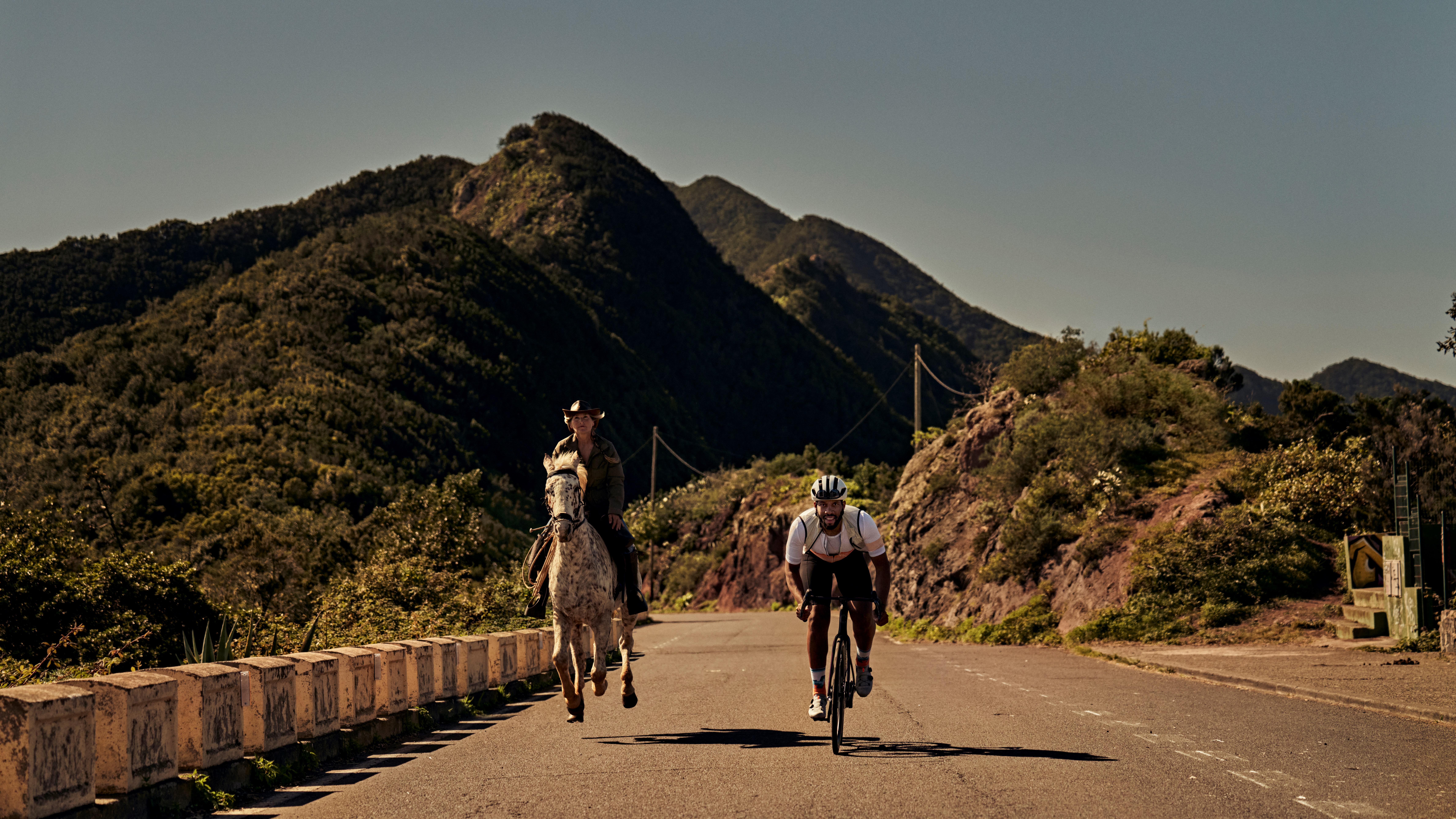
Options and prices
- LAB71 Frameset, EF Team/Black/Grey and Neon, $6,000/£4,750/€5,499
- Hi-Mod Frameset, Black/Yellow and Black, $4,500/£3,750/€4,199
- LAB71 Complete, Dura-Ace, Purple and Grey, $15,000/£12,500/€14,999
- Hi-Mod 1, SRAM Red, Black and Silver/Red and Black, $13,500/£10,500/€13,499
- Hi-Mod 2, Ultegra, Black and Blue/Black, $8,300/£8,250/€8,999
- Carbon 1, SRAM Force, Pale Blue, $6,500/£6,750/€6,999
- Carbon 2, Ultegra, Green and Pink/Black, $5,500/$6,250/€6,799

Will joined the Cyclingnews team as a reviews writer in 2022, having previously written for Cyclist, BikeRadar and Advntr. He’s tried his hand at most cycling disciplines, from the standard mix of road, gravel, and mountain bike, to the more unusual like bike polo and tracklocross. He’s made his own bike frames, covered tech news from the biggest races on the planet, and published countless premium galleries thanks to his excellent photographic eye. Also, given he doesn’t ever ride indoors he’s become a real expert on foul-weather riding gear. His collection of bikes is a real smorgasbord, with everything from vintage-style steel tourers through to superlight flat bar hill climb machines.